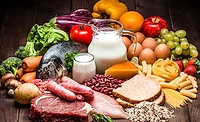FDA Plans to Issue Guidance on Natural Food Colorants, Other Priority Topics in 2025

Image credit: azerbaijan stockers via Freepik
The U.S. Food and Drug Administration’s Human Foods Program (FDA’s HFP) has published a proposed agenda for guidance document work to be advanced in 2025. This work may include the drafting of new guidance documents or proposing revisions to existing guidance.
Guidance documents represent FDA’s position on certain topics and provide information to help stakeholders plan for potential changes that may impact their businesses and organizations. Guidance documents do not impose legally enforceable requirements.
Priority topics the agency intends to address through completed guidance documents in 2025 include:
- An action level for opiate alkaloids on poppy seeds
- The use of food colorants from natural sources (i.e., fruit and vegetable juices)—an effort that was first alluded to in FDA’s April 2025 announcement about working with industry to phase out synthetic food dyes from the U.S. food supply
- Identity and safety information for new dietary ingredient (NDI) notifications.
Additional topics FDA may focus on in this year’s guidance document work are:
- Action levels for cadmium in food intended for babies and young children
- Action levels for inorganic arsenic in food intended for babies and young children
- Hazards analysis and risk-based preventive controls for chemical hazards for human foods
- The Food Traceability Final Rule, also known as section 204(d) of the Food Safety Modernization Act (FSMA 204), the compliance date for which was recently extended from January 2026 to July 2028.
The full list of HFP guidance under development can be accessed on FDA’s website. The agency may issue additional guidance that is not on the list.
Looking for quick answers on food safety topics?
Try Ask FSM, our new smart AI search tool.
Ask FSM →









